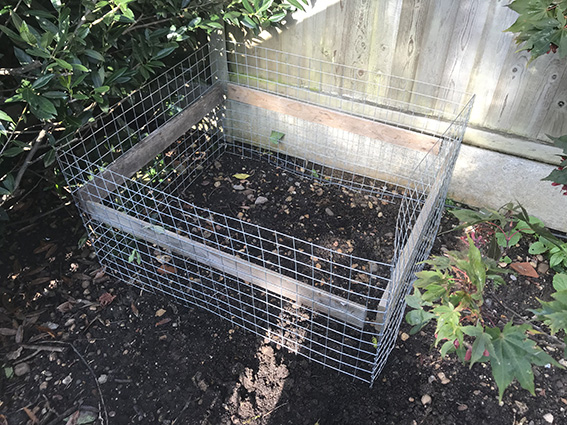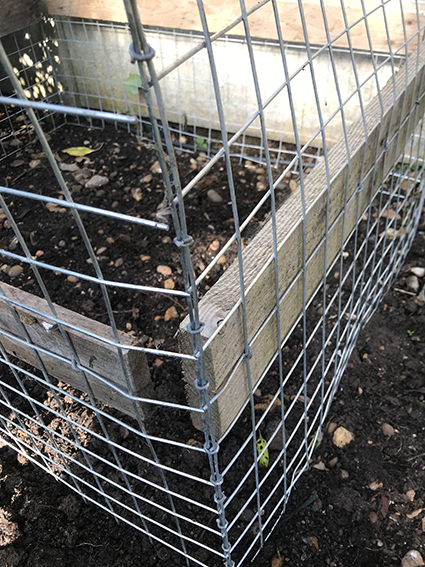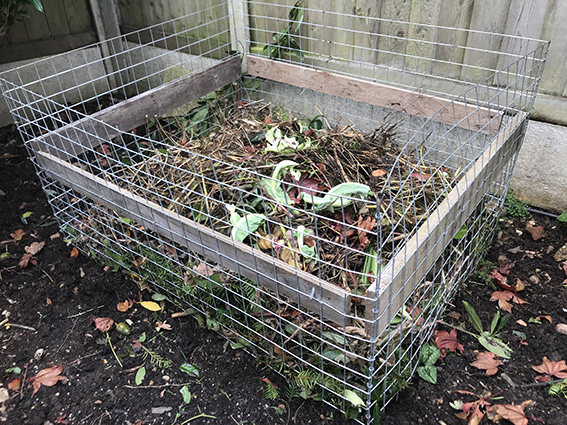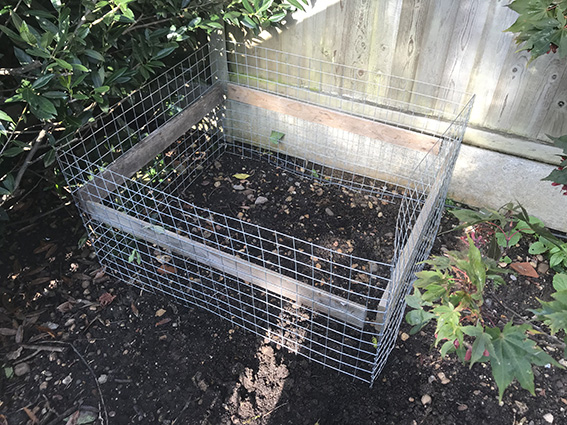Composting for a small garden
I must confess that even though I've been a keen gardener for over 40 years I've tended to think that composting in a ‘smallish' garden takes up too much valuable garden space and found that buying compost in bulk isn't too expensive and infinitely more convenient.
Recently however, due in part to the current crisis of a shortage of HGV drivers, our local council in Essex has reduced the green bin waste collections to every other week earlier this year than they usually do and that's if you're lucky enough that the collection doesn't fall in a week when the operators frustratingly miss the bin altogether. I accept that being ‘green' the bin is somewhat camouflaged against the end of my driveway and the bright pink sacks that often accompany the green bin might be a visual distraction. In addition to that, the fact that its out with so many other green bins on the same day, the choice of which one to empty must be overwhelming.
Notwithstanding the circumstances that Brexit and the pandemic appear to have brought upon us all, I decided to try composting for myself. This change was fortuitously brought about by being in possession of a “palette cage”, which was used to deliver half a ton of large pebbles to a garden I had designed back in the spring. At the time, I thought ‘what am I going to do with this, rather battered, palette and its tough steel cage'?
Not wishing to just add to landfill, I carefully broke up the palette and used the wood for two small, raised beds that I used during the summer for growing vegetables and the steel cage was folded and ‘stashed' behind my garage. At the time though I thought ‘this could actually be used as a compost bin'. So, the events of the council's decision to reduce green waste collections and possessing a steel cage aligned, triggering my decision to start making my own compost.


Making your own compost sounds easy, you just cut down all the end of season perennials add some hedge trimmings, a few leaves, some grass cuttings and hey presto 18 months later you end up with some ‘Monty Don' grade compost!!
Hmmm…. If you search on google “how to make the best garden compost” it returns 120 million results and there is no one rule. Using just the first page results like 99.9% of the western world does, I focused on the top tips, summarised below.
The Mix: On reading a few websites the mix of material varied between 4 to 1 in favour of Carbon (brown material) over Nitrogen (green material) to 50/50 between Carbon and Nitrogen. My first reaction was that my garden looks as though there's an awful lot more green material than there is brown. So, the 50/50 mix would be far more achievable (this mixture, by the way, also had the blessing of a very well-known curly haired TV gardening presenter, who loves dogs).
After a bit more searching, I found that the brown aspect can be made up from Sawdust, wood chippings, newspaper, straw, cardboard, and dry leaves to name a few. Well, I'm no carpenter, so don't have an abundance of sawdust. I don't buy newspapers due the BBC's news website and I don't own rabbits or horses, so straw is non-existent. This left cardboard and dry leaves. Bingo! Amazon regularly delivers ‘over-packaged' goods to my house, so now I have an outlet for all that cardboard and I have a very large Oak tree in my garden, which drops a ton of leaves every year… Hold on just one minute.. Oak leaves take an awful lot longer to break down, so the remaining carbon may need to come from elsewhere. Hopefully the hedge clippings and woody stems will suffice.
For the green material (Nitrogen) no problem, gardens are generally full of it.
Water: So that's the mix dealt with, then there's air and water. At this time of year, the water is pretty much sorted although Essex is a very dry county, so I'm told. Just make sure your compost retains some moisture
Air: The final component is ‘air'. Opinions vary on how often you aerate (turn over) the compost. Turning more often (2 to 4 weeks) suggests the material will break down quicker. But the previously mentioned TV presenter advocates 3 times during the whole cycle. This probably works if you have the gargantuan size bins that he enjoys, but like most of us with limited space and smaller quantities, turning more regularly is likely to produce quicker results.
Anyway, getting back to the gift of the steel cage, I've started filling it up and the great thing I'm looking forward to is that being very light, I'm able to lift the cage vertically off the compost heap and set it down, right next to the heap and turn it all back into the same cage. Another benefit of the cage is that it does allow air to pass through the composting material and so aiding the decomposition process. It sits on the soil allowing all manner of bacteria and other garden creatures to do their work.

Will this replace the need for purchasing bulk, ready-made compost in my Essex suburban location? Probably not, but I'll keep you posted on how my cage and first foray into composting goes.
See later updates
https://www.gardencreationbygarycurtis.co.uk/gardening-blog/compost-january-update
https://www.gardencreationbygarycurtis.co.uk/gardening-blog/first-foray-compost-result

